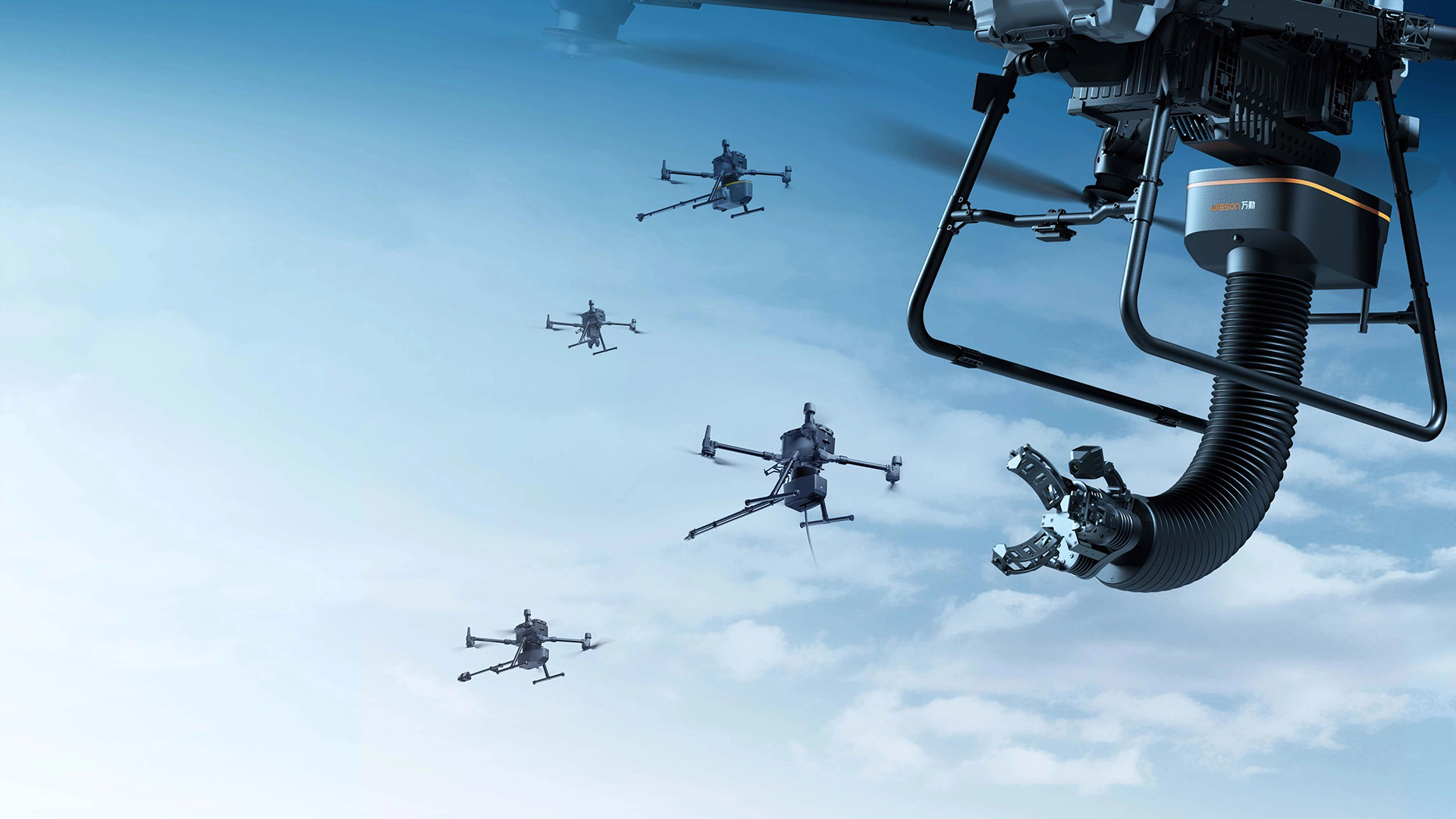
The best drones have come a long way since they first appeared over the horizon a decade and a half ago. Each iteration got progressively better, smaller, and more sophisticated; however, we had to wait until 2025 to see drones that could interact with things via flexible arms.
Wisson Robotics just debuted its "Aerial Soft Robots" at CES, including the Orion AP30 Pliabot aerial manipulator system in collaboration with DJI's first delivery drone, the FC30, announced a year ago (also at CES).
Powered by Wisson’s proprietary Pliabot technology, this system is designed for precise and adaptive operations, such as object handling, item transfer, and contact-based activities. Its unique design and functionality make it a valuable tool in industries like infrastructure maintenance, logistics, and emergency services.
The main component is the Pliabot manipulator arm, which mimics the flexibility and adaptability of human muscles. The company claims that this allows the arm to achieve a high extension ratio while maintaining a lightweight design.
Despite its compact form, the arm boasts a high payload capacity, making it capable of carrying or manipulating objects in various challenging scenarios. The system’s design allows it to perform hovering operations near the ground or at high altitudes, expanding its range of applications.
For example, it can be used in infrastructure inspection and maintenance, repairing bridges, wind turbines, or power lines. In logistics, the manipulator arm can grab and deliver items in confined or hard-to-reach spaces. It might even come in handy collecting rubbish on top of mountains.
Now, this is all well and good, but I have some concerns. First off, many people don’t realize just how big DJI’s FlyCart 30 is. We’re used to thinking of drones as small, dinky, palm-sized gadgets that can hover around our heads or bump into walls without causing much trouble. The FlyCart 30 is a whole different beast.
Then there’s the matter of adding a flexible robotic arm capable of manipulating objects with high precision to these massive drones. It sounds like something straight out of a dystopian sci-fi movie. Much like AI, the fusion of high-precision robotics and autonomous flying machines opens up a world of possibilities – some exciting, others downright unsettling.
Maybe it’s just me, but looking at the Orion AP30 Pliabot gives me serious Doc Ock vibes. From a technological standpoint, it’s undeniably impressive, but it’s also kind of terrifying. Sure, there’s no doubt this kind of tech could be a lifesaver in situations too dangerous for humans, but still – it creeps me out.
Even though I’m not entirely on board with the idea of gigantic drones equipped with robotic arms operating anywhere near me, I can’t deny that this was inevitable. Technology evolves so quickly, and concepts like this were bound to materialise sooner or later.
I’m not involved in industrial drone use, so I’ll have to wait for someone to develop smaller robotic arms for compact drones before I consider giving them a try. As much as I find the idea controversial, I can’t help but look forward to the chance to take one out for a spin someday. Until then, I’ll just focus on not thinking too much about the fact that enormous drones with robotic arms already exist in the world.
For more info on the Orion Range, head over to Wisson Robotics.







